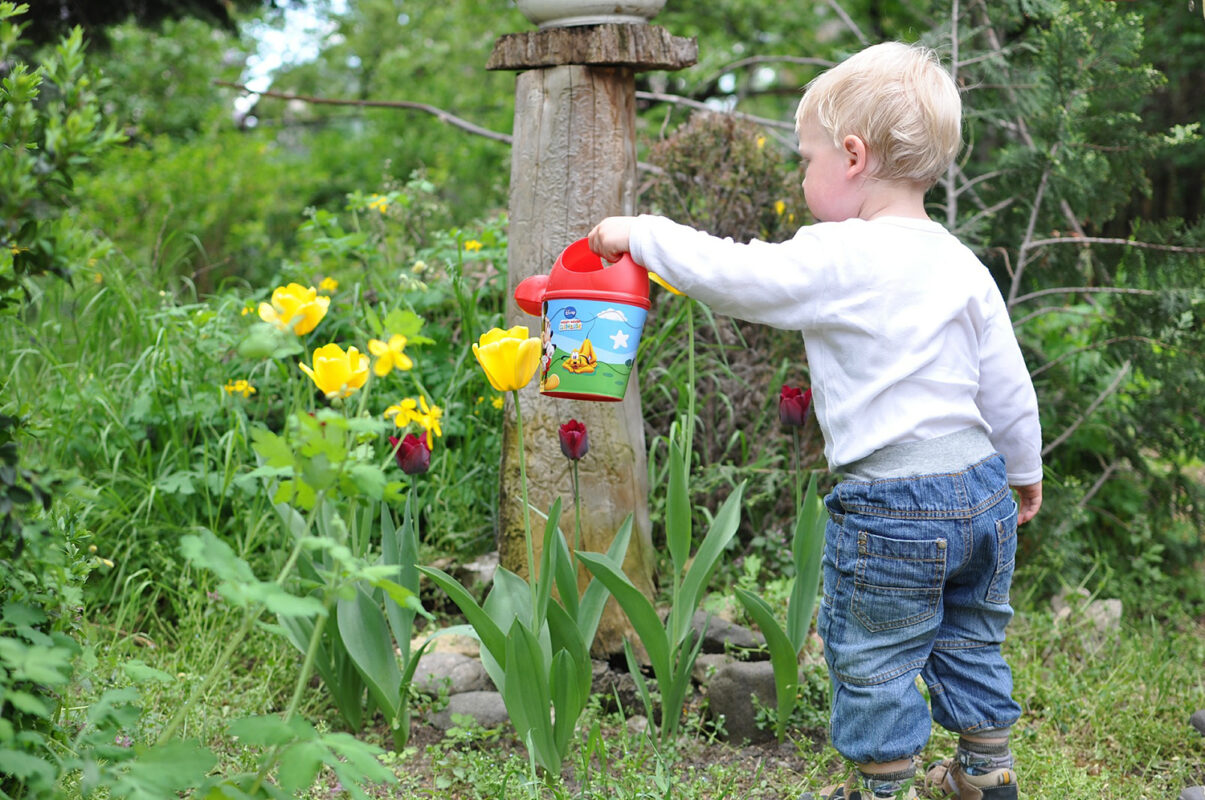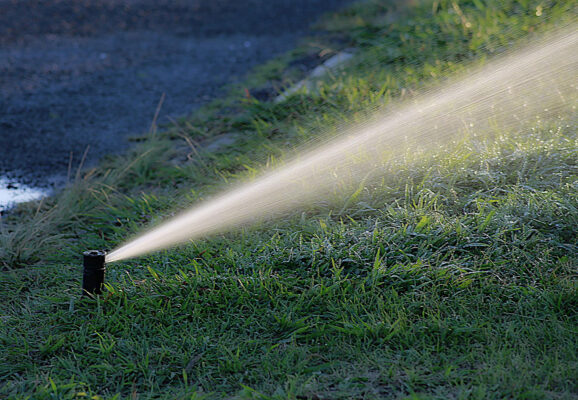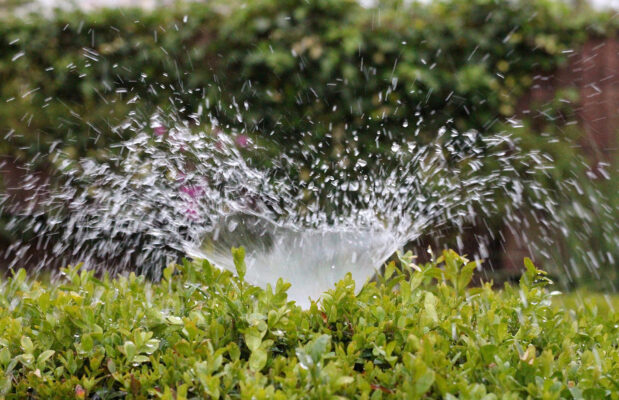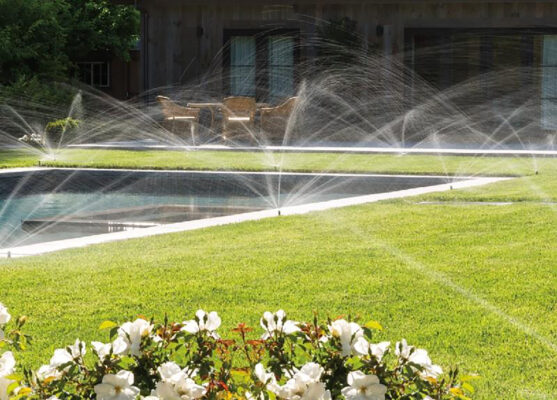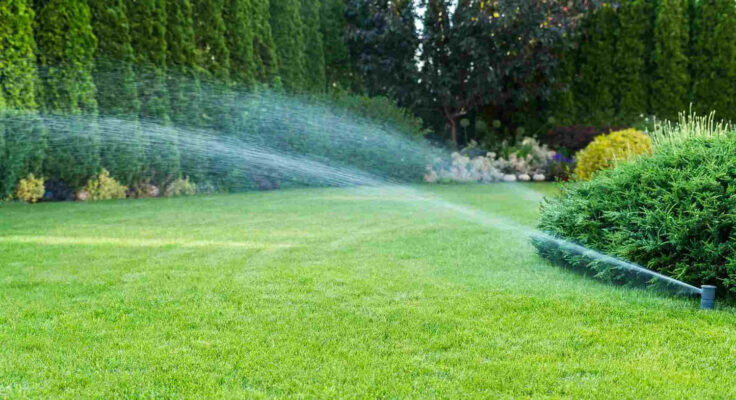How to irrigate a garden?
In previous articles we have seen what the perfect lawn is and how to get it, how to understand the composition of a soil and how to cut the grass of a lawn, now we are going to find out how, when and how much we need to water our garden.
We want to start with a premise:
To irrigate a garden, a plant is needed and strongly recommended.
In fact, hand-wetting provides for the almost daily availability of someone who uses a cane and wets a lot (too much) without distinction of the lawn and plants. In this article we will discover that the system, in addition to wetting each essence as needed, also saves a lot of water.
We come to inform you on how to irrigate a garden in a period of drought such as has not been seen for years. It is easy to say that given the situation it does not irrigate, but why should our plants and our lawn so difficult to obtain and care for with so much love, time and effort must be left to die or suffer from lack of water?
As with all things, there is a correct behavior that avoids exaggerating in one way or another. But let’s start from the optimum because we are not yet in a desert climate with a chronic lack of water.
Design of an irrigation system: why you should rely on a professional
The irrigation system project must be done by a professional both in terms of design and construction. In fact, you need to have some basic skills.
The irrigation system is designed based on what will go in the garden: furniture, plants, lawn, etc.
If you want to insert a swimming pool – even above ground – or a gazebo on a paved area, you must ensure that the system does not wet these parts as well.
Lawns and tall trees usually need underground irrigation with sprinklers. Flowering shrubs, on the other hand, should be wet with drip irrigation that does not wet the flowers. In fact, most of the flowers are damaged if they are wet.
Below we will give some indications with which you will not be able to draw a project, but you can follow the project and the construction done by a gardener or a landscape architect knowing what they are talking about.
What you need to know about garden irrigation and irrigation systems
The first important thing to know is how much pressure there is in the tap to which the system will be connected.
A good value is between 1.5 and 2.5 bars.
If this is not enough, but it usually is, the system will have to be divided into zones.
What does it mean to divide the irrigation system into zones?
Dividing the system into zones means that you divide the garden into several systems and let the water go to one system at a time. If, on the other hand, the water is to be taken from a well, a motorized pump must be provided.
The second important thing to know is that it is always better for the irrigation pipes to be in a loop.
What is a ring irrigation system?
It means that the point where the implant starts is also the point where it ends.
If the system has multiple zones, there will be more rings managed by solenoid valves which, like a traffic policeman, manage the flow of water from one ring to the other by closing the previous one and opening the next.
The third important thing is the distinction between a static sprinkler and a dynamic sprinkler.
What is the difference between a static sprinkler and a dynamic sprinkler?
They are both pop-up sprinklers, that is sprinklers composed of a fixed underground element and one inside which, with the pressure of the water, rises out of the ground level to irrigate.
The static sprinkler is so called because it creates a fixed ray of water. The dynamic sprinkler has a spray that rotates by a certain number of degrees – previously decided – around the center. The static usually covers radii of up to 5 meters. while the dynamic reaches up to 9 meters.
What other types of irrigation systems are there?
However, dynamic and static sprinklers are not the only types of sprinklers in existence. There is also a dripline.
Let’s now define what a drip or dripline system is, another way to define it is a brown composite tube in which there are holes. The water comes out of the holes in the form of drops.
This tube rests on the ground around the areas that you want to irrigate, such as shrubs so that the flowers and leaves do not risk fungal diseases. It is not visible because it is covered by vegetation.
You can also use the dripline for the lawn by burying it (otherwise you can see it unlike the pipes under the bushes), but you risk having striped irrigation.
A system where there are trees and shrubs must necessarily have a mixed system where in some points there are static sprinklers, in others the dynamic ones and in others the dripline.
Garden irrigation: when the irrigation system is turned off
In winter, the irrigation system must be turned off, when the frosts begin and the cutting of the grass ends (here you will find how often to cut the grass, season by season).
But when it rains should the irrigation system be turned off? What if I’m not home?
Do not worry. There is an object called a “rain sensor” that must be inserted into the system and positioned where it usually rains, it will take care of blocking the irrigation system in case of rain. It allows you to save electricity, water and unwanted water stagnation situations.
Restarting the irrigation system: check and maintenance
In early spring, when the frosts end, you have to turn it back on especially to check the status of the sprinklers. In fact, when cutting the grass, it can happen that a sprinkler breaks occasionally.
So having a test ride at the beginning of the season shows you if everything is working well or if some parts need to be changed.
I therefore recommend that you ask the professional, when going to buy sprinklers, to take 10 more of each type and a few more meters of dripline to leave for maintenance.
Changing a sprinkler is something you can do yourself. For the dripline, on the other hand, it could be more complicated but nothing ever happens to it.
When and how much to water the garden
In spring and autumn, water should be watered every 2 to 3 days. In summer almost every day, but a few minutes at a time can be enough: only 2 or 3.
If you have plants that require more water, such as hydrangeas, you will have to, knowing the characteristics of the plants inserted, maybe make the dripline do a double loop instead of one.
But at what time does the irrigation system start?
In spring and summer it is best in the evening. In fact, the plants will have plenty of time to drink calmly. In fact, during the day with the sun the water evaporates faster, perhaps forcing you to increase irrigation times or keeping the plants in water distress.
Irrigation system: a price idea
But how much does the irrigation system cost for an ornamental garden?
The cost is about 12 euros per square meter plus the design and labor which should remain contained around 300/500 euros excluding gardens that are too small or too large which will have different prices.
Now on horseback! Work awaits us! Our new wonderful outdoor space is about to be born!
GOOD WORK and … if you have any questions please write to info@mondodelgiardino.com
Image sources: the images Irrigate the garden-Static sprinkler and Irrigate the garden-Dynamic sprinkler are taken from pixabay.com; Irrigare il giardino – Static sprinklers from Lavorincasa.it; the images Irrigare il giardino-Dynamic sprinklers are taken from dti.it and vivianigiardino.it


